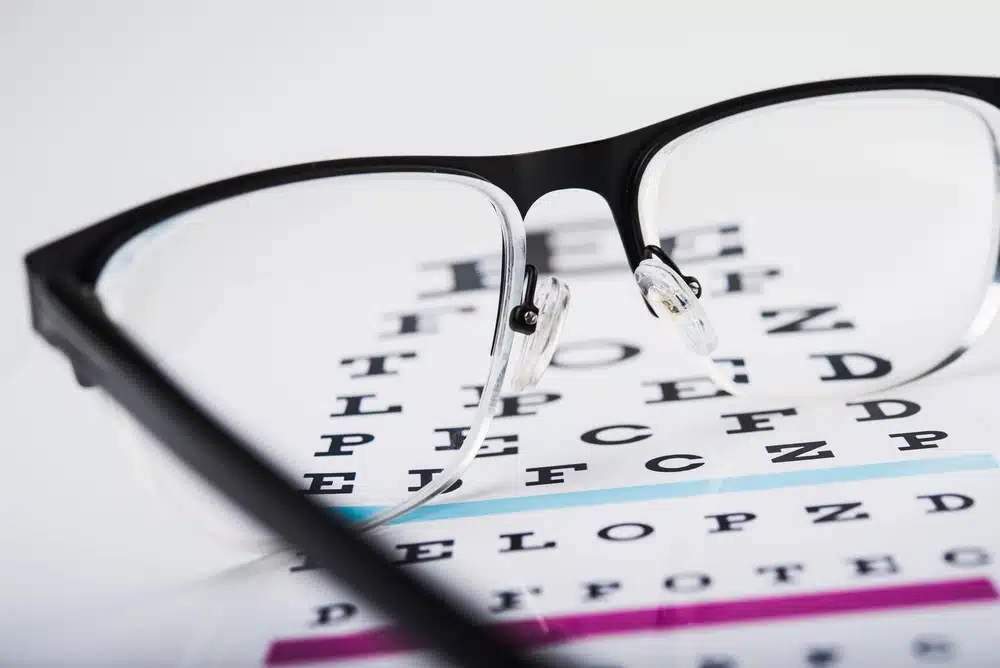We all hear that we’re supposed to have 20/20 vision, but what does it mean? Where does that number come from? We answer the questions that we most often hear about vision and that standard 20/20 number.
Contents
- 1 What does 20/20 vision mean?
- 2 What determines normal 20/20 vision?
- 3 What if I can’t read the letters beneath the 20/20 line?
- 4 What do the larger numbers determine?
- 5 Can you have better vision than 20/20?
- 6 What determines if someone has better vision?
- 7 What does the large E on the eye chart determine?
- 8 How does aging affect vision?
- 9 Can I improve the sharpness of my 20/20 vision?
- 10 What’s the perfect vision?
What does 20/20 vision mean?
When we say that someone has “20/20 vision,” what we’re referring to is Snellen fractions, also known as visual acuity measurements. The top number of the fraction equates to the viewing distance between the patient and eye chart, and the bottom reflects the standard testing distance of 20 feet.
What determines normal 20/20 vision?
When the patient is able to read the letters on one of the lines near the bottom of the Snellen acuity test, that equates to having normal 20/20 vision.
What if I can’t read the letters beneath the 20/20 line?
Many people cannot read the very lower lines on the eye chart, and are only able to see the 20/20 line. This simply means that your eyesight is normal.
What do the larger numbers determine?
Towards the top of the eye chart where the larger letters are located, these levels are associated with poor vision acuity. The results for a patient struggling to identify these letters would measure 20/40, 20/60 and upward.
Can you have better vision than 20/20?
Yes. It is possible to have better vision than someone with 20/20 vision.
What determines if someone has better vision?
If a person can read the smallest letters at the bottom below the 20/20 line, then they have superior visual acuity and therefore, have excellent eyesight – better than normal vision. These measurements would read 20/15, 20/12, 20/10 and so forth.
What does the large E on the eye chart determine?
If the large E at the top of the eye chart is the only clear or discernable letter for a patient who is wearing proper corrective lenses, then they are legally blind.
How does aging affect vision?
Although this isn’t the case for everyone, as many of us age, the acuity of our eyes weaken. We also become more susceptible to vision impairments, such as cataracts, which can result in vision loss.
Can I improve the sharpness of my 20/20 vision?
If you have 20/20 vision and feel like your sight could be sharper, it could mean that your eyes have higher-order aberrations or HOA. In this case, if your doctor detects these aberrations, they could be corrected with gas permeable membrane contacts lenses.
What’s the perfect vision?
There really isn’t a “one-size-fits-all” type of answer. Perfect vision can be a subjective matter, depending on the individual and their preferences on what they’re aiming to see. But the 20/20 mark is a sign of a great starting point.
Visual acuity testing is just one part of a regular eye exam. Book your next appointment with Laurier Optical Innes Eye Clinic today!
